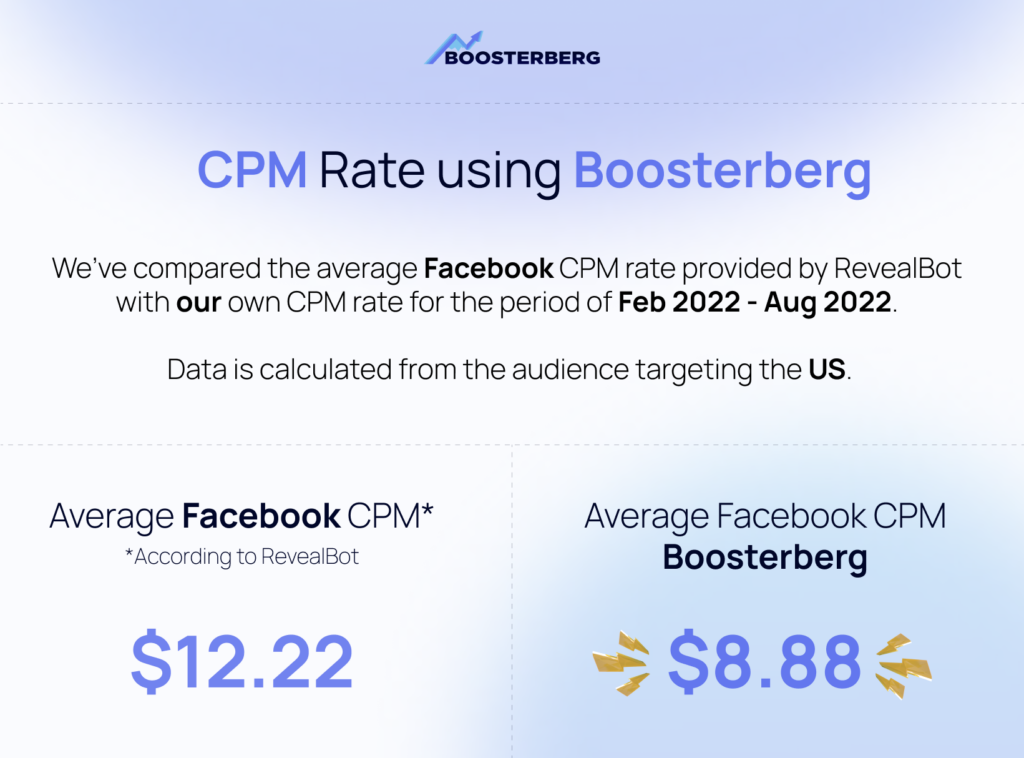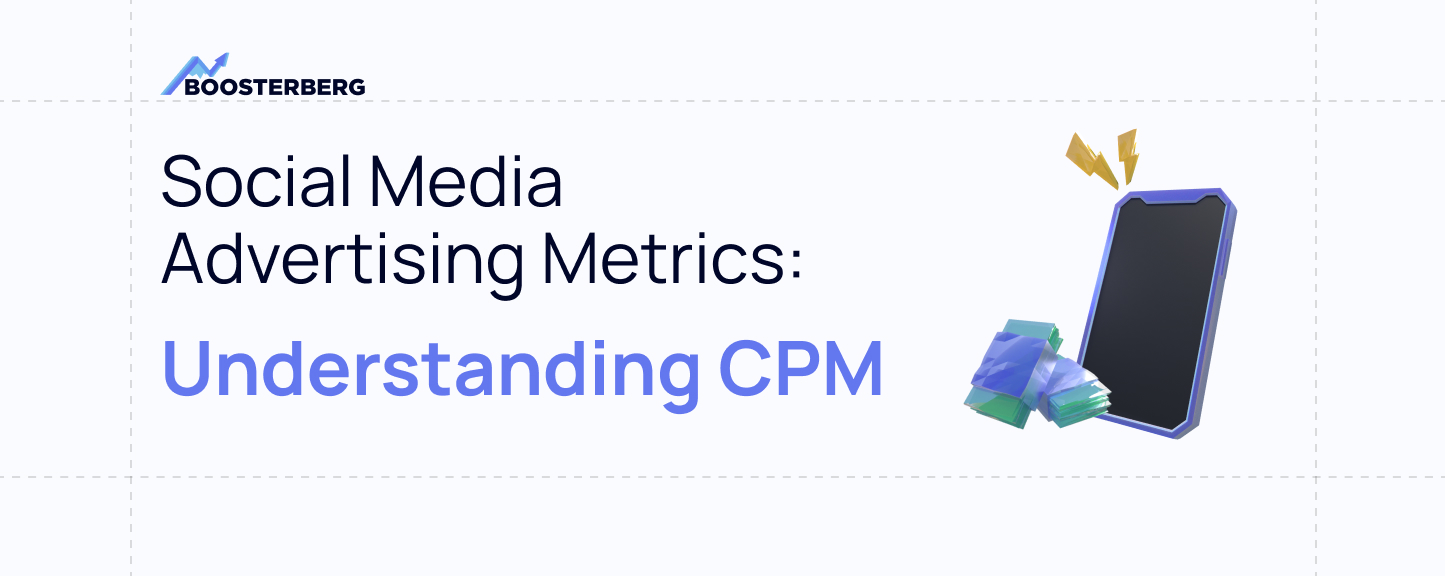CPM (cost per mille) refers to a paid advertising model where advertisers pay a certain price for every 1,000 impressions their ad receives. Impressions represent the number of times the user sees an ad on their screen.
So how does the CPM advertising model work exactly?
Any website owner who offers advertising space sets his own CPM for each ad. For example, if they decide that a banner ad on their website has a CPM of $3, that means the advertiser will have to pay them $3 every time an ad on their website has been displayed 1,000 times.
When to go with the CPM model?
The CPM model is not the only one out there. There are other methods for pricing website ads, such as cost per click (CPC) and cost per acquisition (CPA), but CPM is the most common.
Here’s a brief comparison of the CPM model to the CPC and CPA models:
- CPM (Cost Per Mille): Advertisers pay for every 1,000 impressions their ad receives, regardless of whether users click on it.
- With the CPC (Cost per click) model, advertisers pay for every click their ad receives. No matter how many impressions an ad receives, advertisers are only charged when a user clicks on it.
- In the CPA (Cost Per Action) model, advertisers pay only when users take a specific action after viewing their advertisement, such as making a purchase or filling out a form.
Overall, the choice of pricing model depends on the advertiser’s campaign goals, budget, and desired level of risk and reward.
CPM is a powerful tool for advertisers as it enables them to accurately measure the costs of reaching a wider audience. It also helps to determine the optimal campaign pricing and track the ads’ effectiveness.
In terms of ad objectives, CPM pricing is ideal for campaigns that aim to increase brand awareness. As the exposure promotes the brand, it matters little whether users act after seeing the advertisement, so impressions are enough to reach your goal.
CPM on Facebook
Advertisers who use Facebook Ads Manager can also choose to bid on CPM.
During the creation of an ad campaign, the advertiser sets targeting parameters, including demographics, interests, and behavior.
The advertiser then sets a bid amount for the CPM model. Bids are the amounts advertisers are willing to pay for 1,000 impressions.
As soon as that is done, Facebook’s ad auction system takes over. Facebook’s ad auction system evaluates all the ads that are eligible to be displayed to a user based on the ad’s targeting criteria when an ad space becomes available on Facebook.
The auction system picks the ad with the highest bid for each targeting setting.
Advertisers are later charged based on how many impressions their ads receive.You should remember that Facebook’s auction system isn’t based solely on the bid amount. Facebook also considers user engagement, ad quality, and ad relevance. In other words, even if your bid is lower than your competition’s, but your ad is more relevant to the target audience, Facebook will display your ad. It just goes to show that quality content should always be the priority.
Calculating your Cost per Mille
On Facebook, to calculate your CPM, you need to divide your ad spend by impressions and multiply the result by 1,000.
If your ad spend was $4.5 and you got 1,000 impressions, your CPM was $4.5.
($4.50/1000) x 1000 = $4.5

How to use CPM to measure the cost of reaching a wider audience
By using the CPM model, advertisers can estimate the cost of their campaigns and easily make an informed decision about how they will spend their ad budget.
Let’s have a look at one example of how that works.
Let’s say you’re running a Facebook ad campaign for your new clothing brand. Your budget is $500 and you want to reach as many people in your target audience as possible. You’ve created an ad and launched your campaign.
During your campaign, your ad received 50,000 impressions, which means that your ad was displayed 50,000 times in people’s Facebook feeds.
When you divide the total cost of your campaign ($500) by the number of impressions you received (50,000) and then multiply 1,000 to get your CPM.
($500/50,000) x 1,000 = $10
In other words, it will cost you $10 to reach a thousand people in your target audience. And you can use this information when planning future campaigns.
To sum up, the CPM model is a popular method advertisers use to estimate the cost of reaching a larger audience. With a solid understanding of the CPM model and its calculations, advertisers can determine the cost of their campaigns, adjust their budgets accordingly, and optimize their ads for maximum effectiveness. Despite the fact that CPM is just one of many ways to measure the effectiveness of advertising campaigns, it remains a valuable tool for companies looking to reach new customers and raise brand awareness.
If you want to increase your brand’s visibility and reach more potential customers, Boosterberg can help. With our post-boosting automation tool, you only need to create high-quality content on Facebook and Instagram and set your desired campaign conditions. Boosterberg will do the rest.
Would you like to learn more about
Boosterberg’s Ad Presets?

